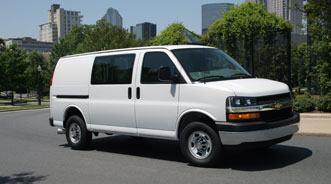Polk Spots Significant Growth in Commercial Vehicle Registrations

As demand for used models also strengthens, Polk recently discovered new commercial vehicle registrations (Gross Vehicle Weight 3-8) in the U.S. are set to reach 440,000 units for the calendar year, an increase of 17.6 percent above last year and a 33-percent spike from 2009.
Polk acknowledged new registrations remain 45.4 percent lower than the historic peak in 2006 when the market boomed to support the impending change in diesel regulations.
Analysts surmised this year’s recovery is being led by a large increase in registrations of GVW 3 vehicles, rather than GVW 8 vehicles, which have historically been the predominant segment in the commercial vehicle market.
“The growth in the GVW 3 segment is predominantly based on those vehicles being purchased for small to large fleets and independent contractor use,” explained Gary Meteer, director of sales and client services at Polk.
“Some of these vehicles are likely to have mixed use for commercial business during the week and family activities on the weekend, such as for trailering recreational vehicles,” Meteer continued.
Polk contends the best indication of this mixed use is the fact that through the first eight months of this year, nearly 48 percent of GVW 3 vehicles were registered to an individual, rather than a business.
The firm said new registrations to individuals were up 27.4 percent in the first eight months of the calendar year, versus 24.3 percent for all vehicles among all GVW 3-8 vehicles.
Analysts went on to mention the Southern region of the U.S. has the largest concentration of new commercial vehicle registrations.
After the record level of new registrations in the 2006 calendar year, Polk noticed new registrations fell sharply in the Central region. However, the Central region has led the industry’s recovery with an uptick in its share of new commercial vehicle registrations to well above historical levels, jumping from 21.4 percent of the market in 2007 to more than 29 percent through the first eight months of 2011.
Used Market Also Rising
Through June of this year, Polk indicated strong demand for clean used commercial vehicles has resulted in the replacement of older models and the lowering of the average age of the commercial vehicle population.
As an example, Polk recollected that back two years ago, 49.5 percent of the commercial vehicle population represented vehicles that were model year 1999 or older.
By the middle of this year, they found just 44.8 percent of vehicles were older than model year 1999.
“The availability of clean used equipment is prompting many smaller companies interested in cost savings and operational efficiencies to replace their much older commercial vehicles with newer ones,” Polk explained.
Small Fleets Rise More Than 30 Percent
Polk also highlighted small commercial fleets representing one to five units are up 23.3 percent during the first eight months of this year. The firm determined that level represented 32.6 percent of new commercial vehicle registrations.
Conversely, analysts noted large fleets reported a 19.5 percent increase since last year.
“While larger fleets are the mainstay of new commercial vehicle registrations, it is significant that owners of smaller fleets are optimistic about their business prospects and purchasing new vehicles over used models, which is traditional small business owner behavior,” Polk surmised.
The firm also pointed out the largest category of new commercial vehicle registrations for the year is leasing and rental companies with a 21.4 percent share, versus a 17.2 percent share during the comparable period last year.
The second largest segment of buyers is individuals, representing 20.2 percent of all new vehicle registrations, down slightly from 21 percent last year.
Diesel Dominates; Ford Gaining Share
Polk stressed that diesel remains the fuel of choice for commercial vehicle owners, and Ford has put forth conscious marketing efforts for its proprietary diesel engine, introduced in the spring of last year, and well received by Ford Super Duty owners.
“Since bringing the engine to market, Ford has steadily grown share and is currently in a tie with longstanding industry leaders International/Navistar for second in the diesel engine segment, behind Cummins,” Polk stated.
Polk reiterated that it has been providing commercial vehicle data to the industry for decades and first began reporting used versus new registration information in 2004.
“Polk’s solutions for the commercial market also include the ability to pinpoint expected demand for specific new engine parts, including turbochargers, fuel pumps and EGR valves, among other components,” analysts emphasized.
“Polk also has insight into filter, lubricant, tire, brake and engine replacement factors, as well as demand for rebuilt and part kits,” they added.

 View The Latest Edition
View The Latest Edition

